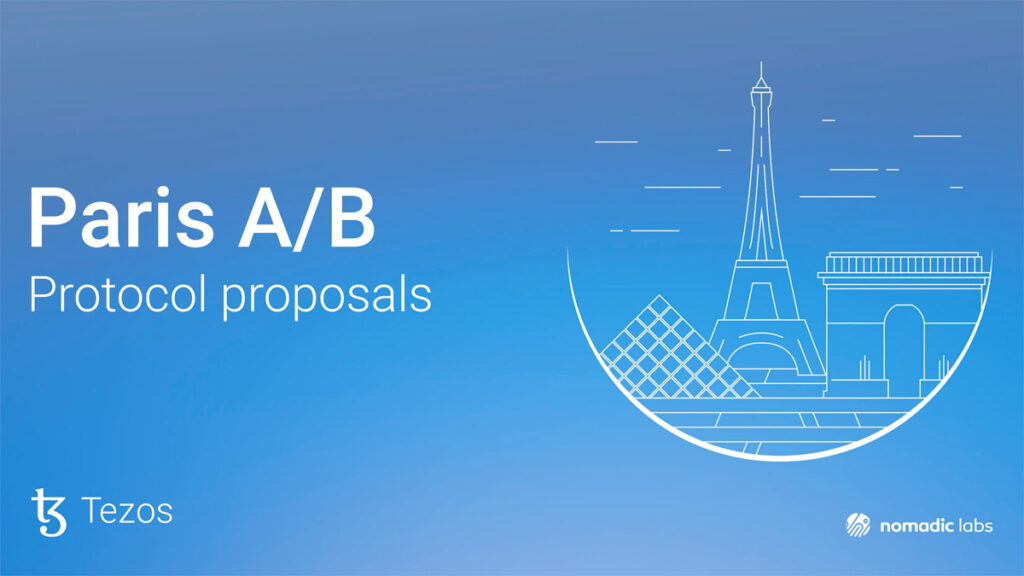TL;DR
- Speed and Efficiency: Paris A and B protocols propose reducing Tezos block times to 10 seconds, aiming for lower latency and faster transaction finality, enhancing network speed and efficiency.
- Data Availability Layer: The introduction of the Data Availability Layer (DAL) on the Mainnet is expected to significantly increase scalability and throughput, especially for Smart Rollups like Etherlink.
- Proof-of-Stake Enhancements: Updates to the Proof-of-Stake mechanism include Adaptive Issuance and Slashing, and a new role called ‘Staker’, to improve security and incentivize participation in the network’s staking process.
The Tezos blockchain community is abuzz with the latest advancements proposed by the Paris protocol. Following the successful activation of the Oxford 2 protocol, the Paris proposals, dubbed Paris A and Paris B, are set to introduce groundbreaking changes to the network’s infrastructure, promising lower latency, faster finality, and significant updates to the Proof-of-Stake (PoS) mechanism.
We are happy to announce that two protocol upgrade proposals for #Tezos, Paris A and Paris B, are ready!
Built by @LabosNomades, @Marigold_Dev, @trilitech, and @myfunctori.https://t.co/G6PpgXbwb6 pic.twitter.com/2qDO0zvy2m
— Nomadic Labs (@LabosNomades) March 28, 2024
Lower Latency and Higher Speed
Paris A and Paris B are initiatives that seek to transform the Tezos blockchain by slashing block confirmation times to just 10 seconds. By implementing this upgrade, these initiatives aim to drastically expedite transactions and enhance the overall efficiency of the network without compromising Tezos’s renowned decentralized nature and robust security.
Data Availability Layer (DAL)
A key feature of the Paris proposals is the activation of the Data Availability Layer (DAL) on the Mainnet. This innovation is anticipated to boost scalability, particularly benefiting Smart Rollups like Etherlink, by increasing throughput and bandwidth.

Refinement of Tezos PoS
The Paris upgrades for Tezos include improvements to its Proof-of-Stake (PoS) system. These changes aim to make it easier to become a baker (validator) and update baking rights. Additionally, the Paris B upgrade introduces Adaptive Issuance, Staking, and Adaptive Slashing immediately after activation. These features revamp the PoS mechanism, making it more suitable for practical applications while strengthening the security of the Tezos blockchain.
Adaptive Issuance and Slashing
Adaptive issuance is another innovative feature that regulates the issuance of tez based on the ratio between the tez staked and the total supply. This mechanism incentivizes participants to stake funds to maintain a target ratio defined by the protocol. Additionally, the adaptive slashing function distinguishes between innocent errors and deliberate attacks, ensuring fair penalties based on the total stake of the attester.
A New Role: The Staker
The Paris proposals create a new role in the blockchain ecosystem called the “staker.” Stakers can support a “baker” (node operator) by providing a security deposit, but they retain control of their funds. However, if the baker engages in improper behavior, the staker’s funds may be at risk of being lost (known as “slashing”).
Conclusion
The Paris protocol proposals represent a significant leap forward for the Tezos blockchain. With these innovations aimed at improving speed, scalability, and security, Tezos continues to solidify its position as a leading blockchain platform.
Regardless of the chosen path, either the phased approach of Paris A or the swift implementation of Paris B, Tezos’s future appears promising. As the Tezos community and validators weigh these proposals, excitement builds for a more streamlined blockchain infrastructure. This places Tezos in a position to reshape the benchmarks for blockchain innovation.












